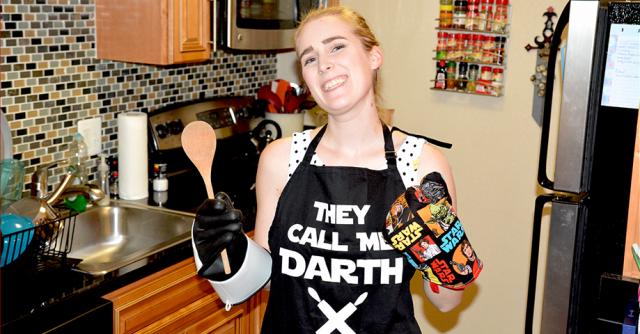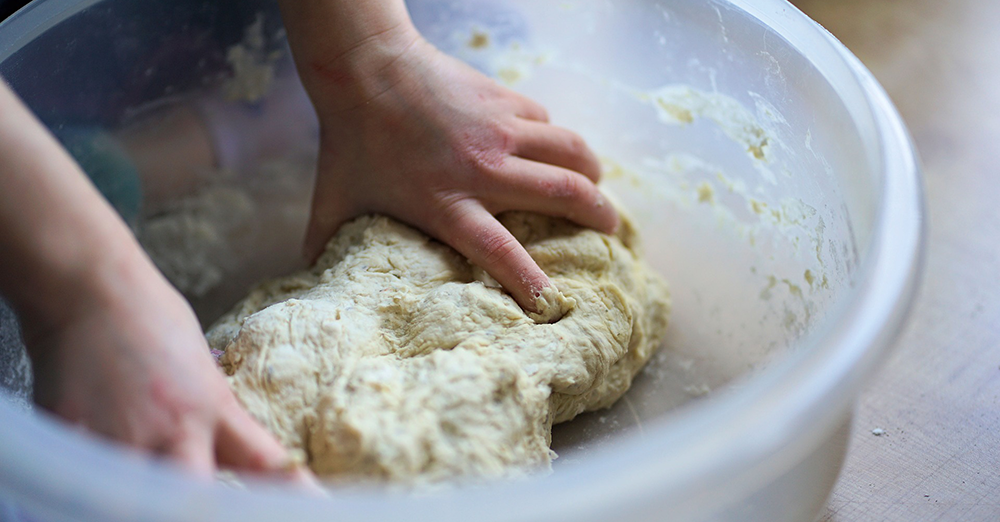Cooking With Science: The Perfect Pizza Puzzle
November 2, 2018Here at Capitol Technology University our motto is find a way or bake one! Okay … technically not, but that’s not going to stop us from starting up a new series: Cooking With Science.
Hop aboard this ship to adventure with me, a terrible cook, as I learn fun science facts about food that will hopefully help me get better at cooking. It’ll be a bit of a reach for me, people. I am infamous in my house for somehow lighting toast on fire and all I did was stick it in a toaster, but I am here for the challenge.
Today I want to explore the science behind creating the perfect pizza in the hope that I might unravel the secrets of the universe -- and also eat delicious homemade pizza. I’m talking seasoning, dough, toppings, and finding that perfect cheese to sauce ratio, but probably not in that order. Let’s get into it.
A solid foundation – let’s dough this!
Never made dough from scratch? Yeah, me neither. This seems like the hardest part of the pizza. What even goes into pizza dough? According to Scientific American, pizza dough has three main ingredients: flour, water, and yeast. Flour is the main ingredient and it’s mostly made up of starch and proteins called glutenin and gliadin. When you add water or another liquid to flour, the protein fibers loosen and link together to form a gluten network.
Why is that important? Because the perfect pizza requires a Goldilocks-level gluten network. Make your gluten network too strong and you end up with a rock of dough; too weak and your dough won’t rise. To get your gluten network linking just right you need the right ratio of water to flour and the right amount of kneading.
The rule is that the less water you use and the longer you knead your dough, the stronger your network will be. If you’re following a recipe like I am, you’ll want to make sure you get the precise amount of water to flour. As for kneading, that’s the tricky bit. I tried to knead my dough until it had a nice stretch to it when I pulled it, but it didn’t feel tough or start to crack. Scientific American recommends kneading for about 3 minutes, but it felt like I was kneading forever. Don’t be afraid to get in there.
Yeast is what allows the dough to rise, so don’t forget this step! Yeast is an active ingredient that eats the starch from the flour and then expands to help your dough rise up. Several sources also mentioned the importance of adding a little salt, which slows down the rising process. The yeast, which needs water to activate, is inhibited by the salt which actually results in stronger dough that isn’t a total sticky glob.
Other ingredients that sometimes go into pizza dough include sugar and shortening. Shortening for flavor; sugar because it helps keep more water inside the crust and helps create a nice brown crunchy crust.
Seasoning: so when do I throw spices on it?
Why bother making my own pizza from scratch if I’m not going to personalize it? Flavor giant McCormick suggests some of the following spices to throw on your pizza: salt, garlic or garlic salt, oregano, basil, red pepper, sriracha black pepper, chipotle pepper, or garlic ranch seasoning.
After I let my dough rise overnight, my recipe called for me to form and bake the dough part way before I started adding anything on top of it. Accomplishing this, I added sauce, which I’ll talk more about in the next section, and went for it with the spices.
I decided to stick to classic Italian flavors with garlic salt, oregano, and basil. I did not add any additional salt by itself and I have to say between the garlic salt and cheese I was pretty much covered on the saltiness, so I think that was the way to go. I did not have, but wish I had, fresh basil to add to my pizza. If you’ve got an herb garden I’d recommend this as the time to do a little harvesting.
Calculating the cheese to sauce ratio
I am firmly in the camp that pizza without sauce or cheese is just bread. Don’t get me wrong; I like a good white pizza but it just feels more like cheesy bread or garlic bread to me, and don’t even get me started on those wild chaos lovers that use barbecue sauce or ketchup instead of tomato sauce. But how do I know what the right ratio of sauce to cheese is?
First of all, the type of cheese you go with matters. The Journal of Food Science published a study that found mozzarella cheese plays better with certain other cheeses in combination. They used machine learning to determine that cheddar, Colby, and Edam cheese are less likely to blister, whereas mozzarella is. Mixing one of them in with mozzarella gives you that delicious mozzarella taste with less burning, thus creating a more perfect pizza.
There seems to be debate as to the perfect ratio of sauce to cheese, but I used the Burke’s portion guide I found here as a reference. It very helpfully describes how much you should add of cheese, sauce, and a variety of toppings based on the size of the pizza you are making.
Toppings: we started from the bottom and now we're here!
My favorite part! Toppings are so fun, and the sky is really the limit on what you can use. When choosing toppings I kept my Burke’s portion guide in mind, and I was mindful too to limit the size and amount of ingredients I used that had a lot of water in them. I did go for red peppers, but I chopped them pretty small. Pepperoni made also made the cut on my perfect pizza. I decided not to go too crazy since I wanted to see if I could taste the added spices and actually see how the cheese turned out.
Finish baking and you are done and ready to pizza party!
There’s a lot more science to pizza than I thought, but I found knowing some of the reasoning behind how pizza works and comes together really helpful. It made me think more about what I was making, and take extra care in the creation. It might not have turned out exactly perfect, but this pizza really was delicious and is one of the better things I’ve made in the kitchen.
If you like this series let me know what I should cook next! Stay tuned for next time as I explore some traditional Thanksgiving dishes…




